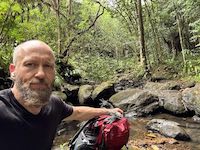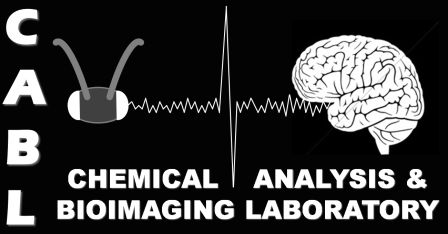Welcome to the Hillier Lab!


My interests are in the chemical senses and particularly dissection of odorants and tastes, and tracking them from source to receiver. The interplay between signals emitted as molecules, transit through the environment, and detection by receivers is a delicate dance which has persisted across Kingdoms of organisms. As humans, we view much of our world as a realm of sight and sound, paying little heed to the critical elements of our lives which are dictated at the molecular level (both genetically and chemically). The chemical senses are ubiquitous and influence the minutia of virtually every living thing on this planet. Unfortunately, our understanding of such chemistry, and particularly natural chemistry, is limited. Evolutionary processes have shaped products and processes which humans are just beginning to decipher. This includes chemical syntheses, but also chemical transport, detection and downstream effects such as intricate behaviours modulated by the simple interception of one or more molecules. These effects are some of the most ancient and advanced forms of communication. As such, my laboratory has both basic and applied components, and exploring elements of chemical ecology, agriculture/forestry, behaviour and neuroscience.
Who I Am:In 1998, I completed a BSc at Memorial University, and undertook a PhD in the same institution, where I studied the use of semiochemicals for pest monitoring with Agriculture and Agri-Food Canada. I graduated in 2002 and undertook a postdoctoral fellowship at the University of Utah. There, I initially studied courtship in moths, but became trained in insect neurophysiology. I was recruited by Acadia University in 2007. Over the years I have also been a Visiting Scientist at the University of Arizona (2006), the University of Hawai’i (2014) and the Theodor Boveri Institut (2006) and Max Planck Institut für Chemische Ökologie (2007, 2012), both in Germany.
What we do:Our lab’s research program is directed towards a better understanding of insect olfactory processing and the relationship between odours and insect behaviour. More specifically, my research is concerned with mapping of olfactory receptor neurons, identification of previously undescribed male pheromone-sensitive sensilla and the evolution of the olfactory system and odorant-driven behaviours. Through the use of comparative evolutionary studies of insect olfaction, Team Hillier aims to develop novel techniques to manage some of the worst insect threats on the planet using alternatives to standard insecticide applications. In this way, basic evolutionary studies provide vital insight to the development of applied technology.We also maintain regional network of collaborators in applied aspects of entomology, including the chemical ecology and management of blueberry, apple, vegetable, vineyard and forest pests. This includes a research network throughout the Atlantic provinces and internationally, integrating federal research partners (Canadian Forest Service, Agriculture Canada), academic institutions (Max Planck in Germany, University of New Brunswick, Dalhousie University) and industrial affiliates (Forest Protection Limited, Sylvar Technologies, Andermatt Biocontrol, Agrifor Biotechnical Services). Our laboratory includes the Chemical Analysis and Bioimaging Laboratory or CABL, for short. This facility provides a benchmark facility for insect neurophysiology and chemical ecology studies in Canada. Since its development in 2009, dozens of students and collaborators from around the globe have benefited from resources within this facility.




